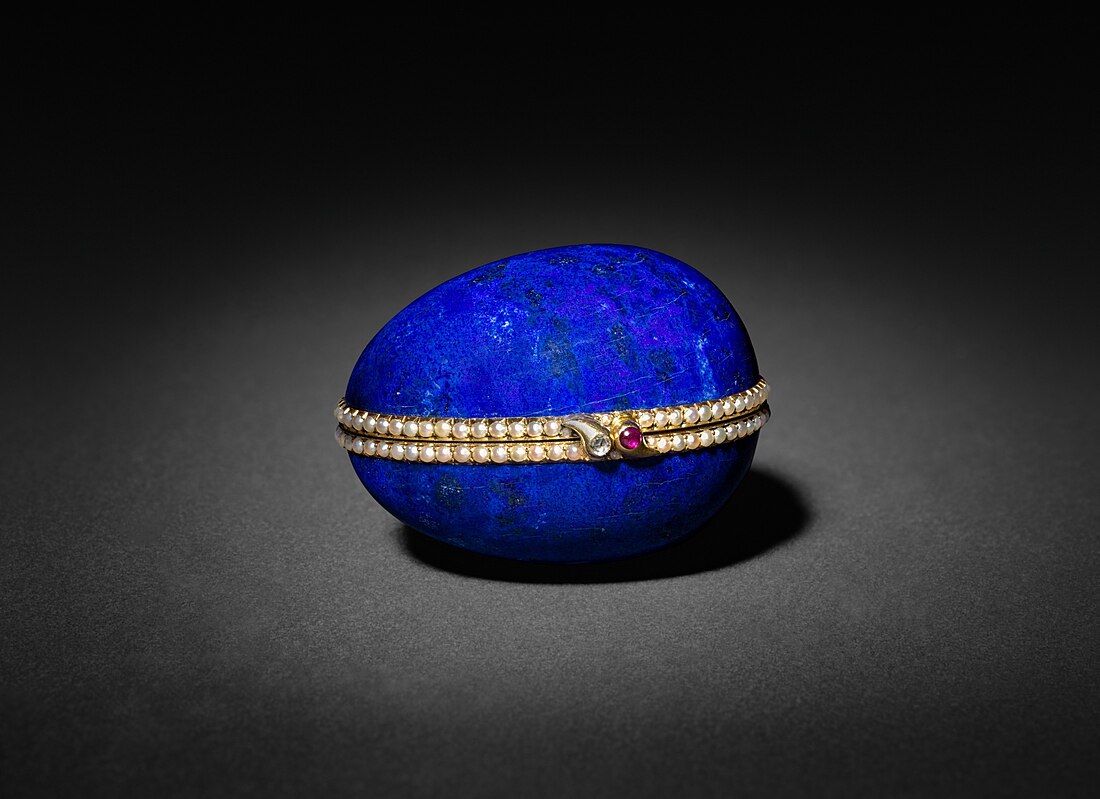Top Qs
Timeline
Chat
Perspective
Lapis Lazuli (Fabergé egg)
Fabergé egg From Wikipedia, the free encyclopedia
Remove ads
The Lapis Lazuli egg is a jewelled Fabergé egg, attributed to the House of Fabergé in St. Petersburg, Imperial Russia. Unlike many of the other Fabergé eggs, Lapis Lazuli was a private commission and isn't considered to be one of the imperial Easter eggs,[1] as it was never given to a Russian Tsarina.
It is currently part of the Cleveland Museum of Art's collection.[2]
Remove ads
Design

The egg exterior primarily consists of lapis lazuli, a deep-blue metamorphic rock. It is also made up of gold, enamel, pearls, diamonds, and rubies.[3][4] Inside the egg is a decorative orb (a "yolk") that can be opened to reveal a miniature imperial crown as well as a small ruby.[5]
The egg is unmarked.[6] The design is similar to the Kelch Hen, another Fabergé egg that is red and contains a similar decorative yolk with a small hen inside of it.[4][6][7]
Remove ads
History
The egg was created in the late 1800s or early 1900s by the House of Fabergé.[3] The Cleveland Museum of Art estimates it may have been created between 1885 and 1890.[5] The original commissioner or owner of the egg is unknown.[7]
India Early Minshall started collecting Fabergé objects in 1937.[8] In the following decades, Minshall acquired many more Fabergé works, including the Lapis Lazuli and Red Cross with Triptych eggs.[8][2] Following her death in 1965, Minshall's private collection was given to the Cleveland Museum of Art, who proceeded to display over 60 items from her collection in a special exhibition.[9] Lapis Lazuli continues to be displayed at the Museum as part of the India Early Minshall Collection.[6][5]
Remove ads
Questioned authenticity
In two articles, the first one published in September 2021 in The Burlington Magazine[10] and a second one in the Fabergé Research Newsletter Winter 2021,[11] it is hypothesized that this egg might be a Fauxbergé made specifically to contain the original surprises of the Rosebud egg; a miniature version of the Imperial Crown of Russia and an egg-shaped ruby pendant.
Notes
References
External links
Wikiwand - on
Seamless Wikipedia browsing. On steroids.
Remove ads

